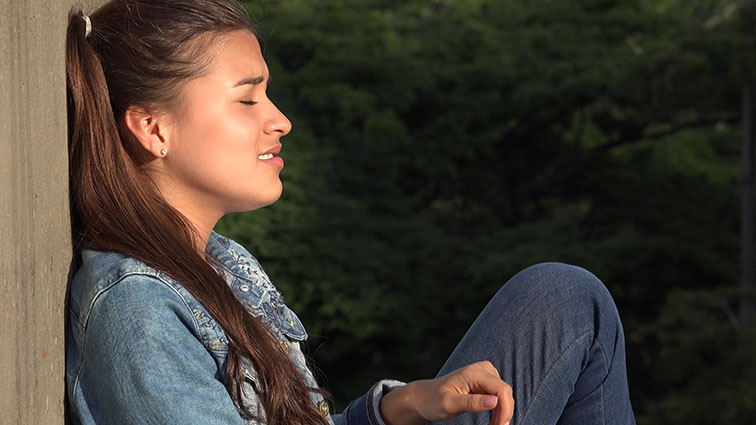Social Anxiety Disorder (SAD) is a marked fear or anxiety of social situations where an individual may be exposed to possible scrutiny by others. Now, Yura Loscalzo and colleagues have examined the contribution of different components of interpretation bias — a model proposed to explain SAD whereby affected individuals systematically assign a threatening meaning to an objectively ambiguous stimulus with several possible interpretations1.
The study included three groups of adolescents aged 13-17 years: a SAD (n=30), a subclinical SAD (n=60) and a non-socially anxious (n=95) group. Adolescents in both the clinical and subclinical SAD groups produced negative interpretations of ambiguous social situations. This negative interpretation bias was, however, limited to social situations for those with subclinical SAD, but also applied to non-social situations in those with clinical SAD. In addition, only those with clinical SAD believed in these negative interpretations.
Interestingly, there were no differences in positive interpretation bias between the three groups, such that those with SAD did not report a lower likelihood of positive interpretations than the non-socially anxious group. The researchers propose that future studies should examine the characteristics of interpretation bias along the whole continuum of social anxiety, not just in those with clinical SAD.
Study Implications
Lead author Yura Loscalzo indicates the key implications from the study data:
Clinical Practice: “Our study data tentatively suggest that clinical interventions should focus not only on reducing negative interpretations in ambiguous social situations, but also in non-social situations. Moreover, they should target also belief in negative interpretations, as this seems to be a clinical feature of SAD”.
Schools-educational practice: “In the classroom, there may be students with a clinical diagnosis of SAD, as well as students with subclinical social anxiety. Because both groups are characterised by negative interpretation bias, they might both have negative effects, such as low wellbeing or low school performance. Indeed, in school, there are many social situations to face. Hence, it is critical to foresee, as part of the schools-educational practice, a screening of the students based on instruments such as the Adolescents’ Interpretation and Belief Questionnaire, which detects students at-risk of developing SAD as being characterised by negative interpretation bias. These students may then be helped by means of preventive or clinical interventions”.
Gaps and recommendations for further science: “The research on the interpretation bias in pre-adolescents and adolescents with social anxiety is scant. It is critical that future studies analyse further the interpretation bias along the whole continuum of social anxiety in pre-adolescence and adolescence. Finally, the development of a screening instrument that assesses negative interpretations of social situations could be useful to detect Social Anxiety Disorder”.
Loscalzo, Y., Giannini, M. & Miers, A.C. (2018), Social anxiety and interpretation bias: examining clinical and subclinical components in adolescents. Child Adolesc Ment Health. 23: 169-176. doi: 10.1111/camh.12221
Further reading
1Castillo, M.D. & Leandro, P.G. (2010) Interpretation bias in anxiety a synthesis of studies with children and adolescents. Procedia-Social and Behavioural Sciences, 5:1105-1111. doi: 10.1016/j.sbspro.2010.07.243
Glossary
Social Anxiety Disorder (SAD): a marked fear or anxiety about one or more social situations in which the individual is exposed to possible scrutiny by others.

